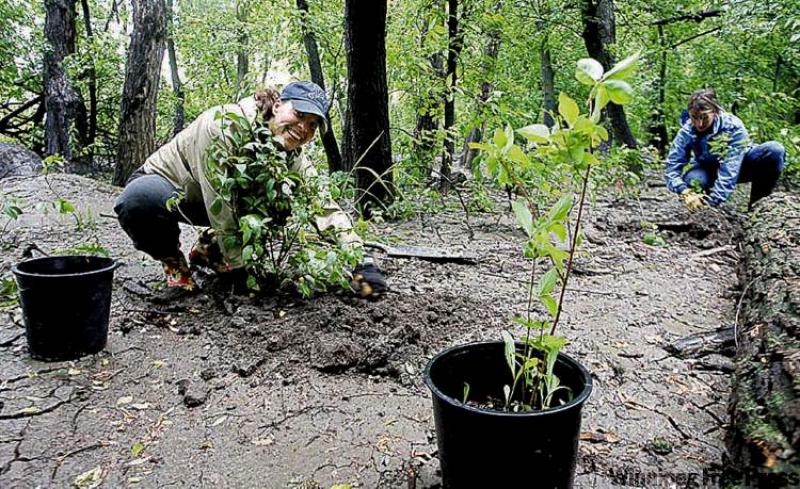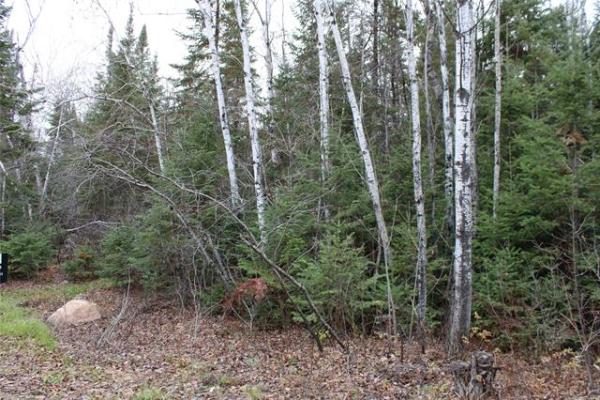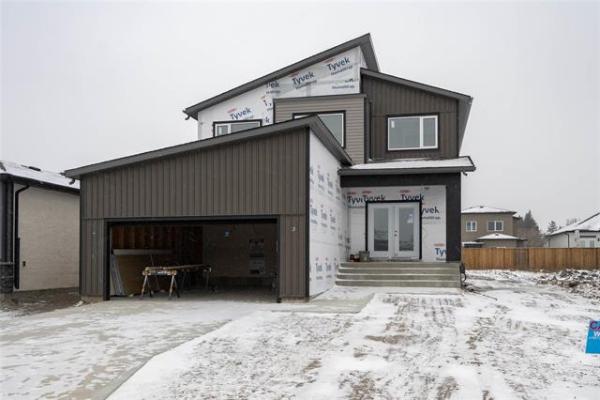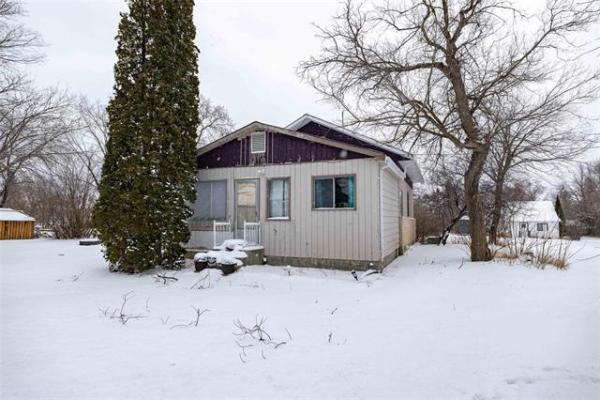I get many questions each year about how to plant a tree properly. Here are some basic guidelines to help you. You might want to save them for future reference. I also have guidelines for those property owners that want to get large trees planted with tree spades by professional tree movers. You can get in touch with me for more information.
1. Trees and shrubs can be planted in the spring or fall, but coniferous evergreen trees do best when planted in late summer and early fall. Choose a location for the new tree that will allow it to grow to its maximum width and height without growing into a fence, building, sidewalk, driveway, under another tree, or under power lines. Know the typical mature height of the tree that will be planted. Most planted trees become quickly overcrowded.
2. Dig the planting hole 0.3 to .45 metres deep and make it 1.2 metres wide.
Larger trees should be planted with this ratio in mind. The idea is to create a saucer-like hole. Place the tree in the centre of the hole. Secure a string from ground level on one side and extend it to the other side while avoiding the tree. Pull it tight and secure the other end at ground level.
Raise the tree so that the original grade from which it was dug in the nursery meets the string line. Measure how much soil you will need under the root ball to keep it at the desired string height. Remove the tree from the hole.
3. Use a mixture of soil that includes some of the original clay-like soil as well as black loam and organic materials such as rotted manure or compost. Place soil mixture under the root ball location and tamp it in so you get the desired height you estimated. Make sure the soil is very firm under the ball. Replace the tree and check with the string for appropriate location of the top of the root ball. Adjust height as necessary.
4. Thoroughly water the added soil and check its height. Water additions will ensure all trapped air in the soil is removed. Add more soil if necessary. Set the tree in its place and gradually add a mix of top soil and original dug-up soil to the planting pit up to the base of the root ball. Spread sufficient bone meal powder on the root ball to cover it.
Thoroughly water and let drain.
5. Add soil mixture in layers around the tree ball adding bone meal and watering thoroughly each time. Remove the burlap -- if present -- and twine away from the root ball once the hole is filled to half the height of the root ball. Tuck the burlap under the soil to expose the sides of the root ball. If there is a wire basket on the root ball, cut the surface portion of the wire only with wire cutters. Leave the sides of the wire basket intact. Trim off any torn roots and add copious amounts of bone meal powder to the exposed root ball soil surface.
6. Be sure the tree is kept straight during this process. Keep backfilling with the soil mix until ground level is reached. Thoroughly water. Add soil to any slumped areas.
7. Fertilize with plant-soluble starter fertilizer (e.g. plant starter fertilizer such as 10-52-10 or some other high phosphorus, low nitrogen fertilizer). Mix fertilizer in water following package directions. Small trees up to 4.5 metres in height could use four to six typical buckets of water and fertilizer. For some tree species such as maples and birches, you should add iron chelate powder. I use 1/2 teaspoon per 15-litre pail. It is important to remember the absorbing fine root system of trees is usually found in the upper 15.2 centimetres of clay loam soils. Add 5 to 7.6 centimetres of wood chip/bark mulch to the entire saucer area.
8. Keep the mulch to a depth no greater than 2.5 to 5 cm at the trunk.
Do not use root feeders and fertilizer stakes as they are not truly effective for this purpose.
9. High phosphorus fertilizers and bone meal (slow release organic source of phosphorus) are very important for the growth of new roots on transplanted trees and all other plants. Never use high nitrogen fertilizers for newly planted coniferous evergreen trees, even if the package says 'evergreen fertilizer,' as this can seriously affect roots damaged from the transplanting process. Wait for at least two years (summer seasons) after transplanting the tree before using a slow-release nitrogen evergreen fertilizer.
10. Leave the tree for a week and then check the soil moisture. Water if the surface depth of 2.5 or 5 cm seem dry. Check for one more week. Let the soil dry out for a longer period of time. Regularly water newly planted trees for at least two years.
11. Before winter, be sure to thoroughly water the soil again. If you had to use guy wires and tree ties, check them for unusual slackness or tightness.
12. Remember to remove the ties and guy wires two years after planting, otherwise the ties will girdle and either seriously damage or kill the tree.
13. If a bare-rooted tree is being planted, spread open the roots before covering them with soil and follow the directions above.
Michael Allen is a consulting urban forester and certified I.S.A. arborist and owner of Viburnum Tree Experts. He makes house and garden visits to assess tree and shrub problems. He can be contacted by calling 831-6503 or by email at viburnumtrees@shaw.ca You can also mail questions to Michael Allen, c/o Newsroom, Winnipeg Free Press, 1355 Mountain Ave., Winnipeg, MB, R2X 3B6. His website is www.treeexperts.mb.ca




